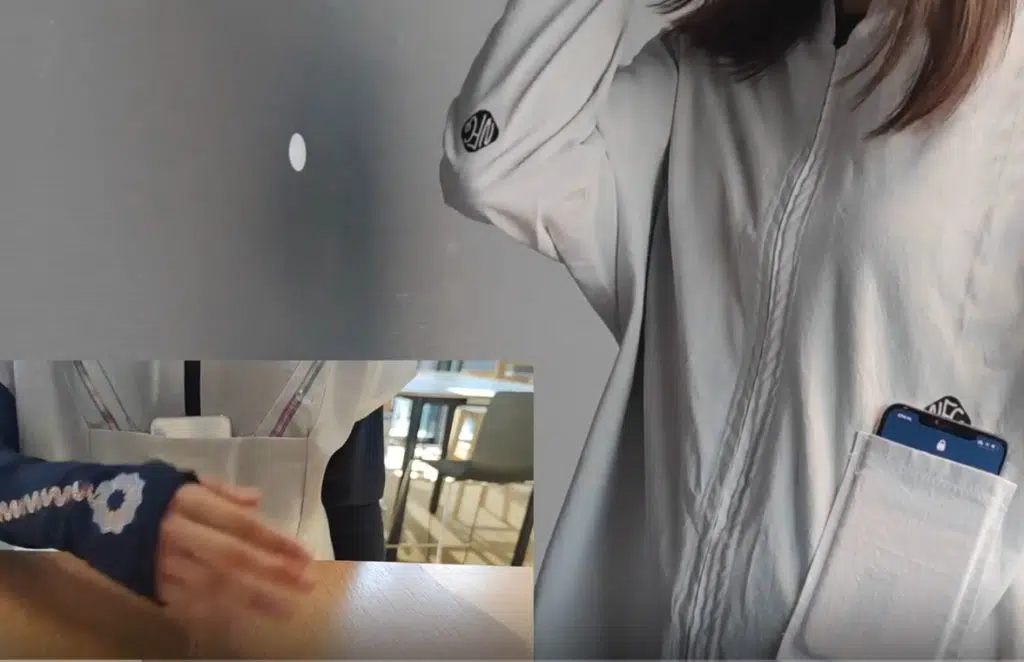
An international team of researchers has developed flexible NFC extenders that enable the wearer to interact with NFC tags at a greater distance than has previously been possible, opening up the potential for hands-free NFC interactions in use cases ranging from exchanging contact details at a distance, entering a building while carrying shopping bags and accessing online instructions while carrying out physical exercise.
The “body-centric NFC” technology is designed to be integrated into clothing so a communications link can be created between the wearer’s knees, elbows or other parts of the body and a smartphone or other NFC-enabled device placed in a pocket of the garment.
The wearer can then make hands-free interactions with NFC tags and devices using different parts of their body and without needing to directly scan a tag or device with their NFC smartphone or wearable.
A video shows how the technology works and how it can be used to create multiple new use cases for NFC:
“NFC has been widely applied for human-computer interaction (HCI). However, the short sensing distance of NFC requires the users to initiate the tasks with extra effort, mostly using their hands, so it is inconvenient to use NFC in hands-busy scenarios,” the researchers say in a paper published to accompany their research.
“This paper presents an investigation of body-centric interactions between the NFC device users and their surroundings,” they explain.
“The exploration is based on the recent development of near-field-enabled clothing, which can passively extend an NFC-enabled device’s reading distance to users’ body landmarks.
“We present an accessible method for fabricating flexible, extensible and scalable NFC extenders on clothing pieces, and an easy-to-use toolkit for facilitating designers to realise the interactive experiences. The method and toolkit were tested in technical experiments and in a co-creation workshop.
“The elicited design outcomes and the further exploratory makings generated knowledge for future research and embodied interaction design opportunities.”
Next: Visit the NFCW Expo to find new suppliers and solutions